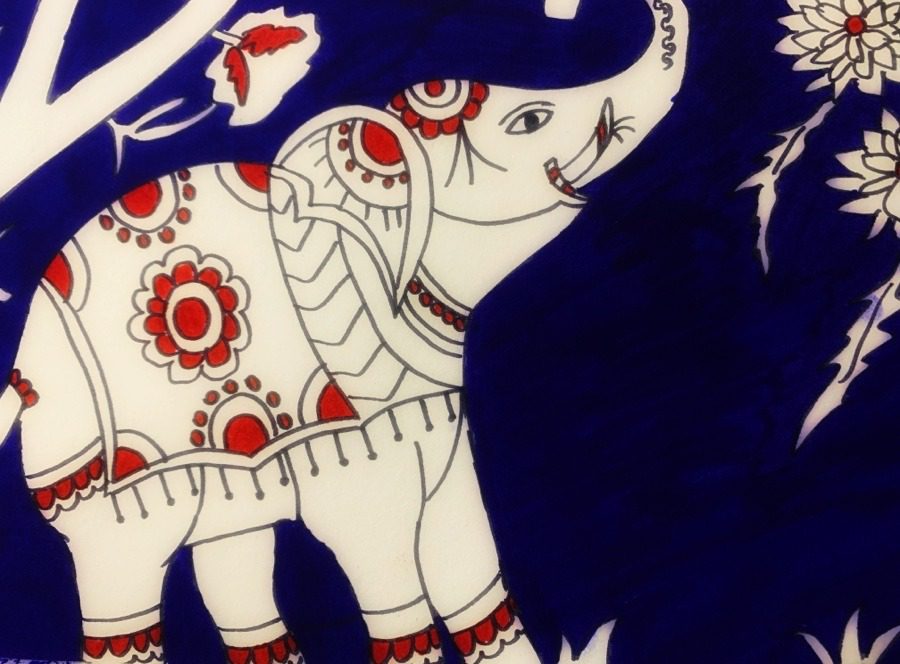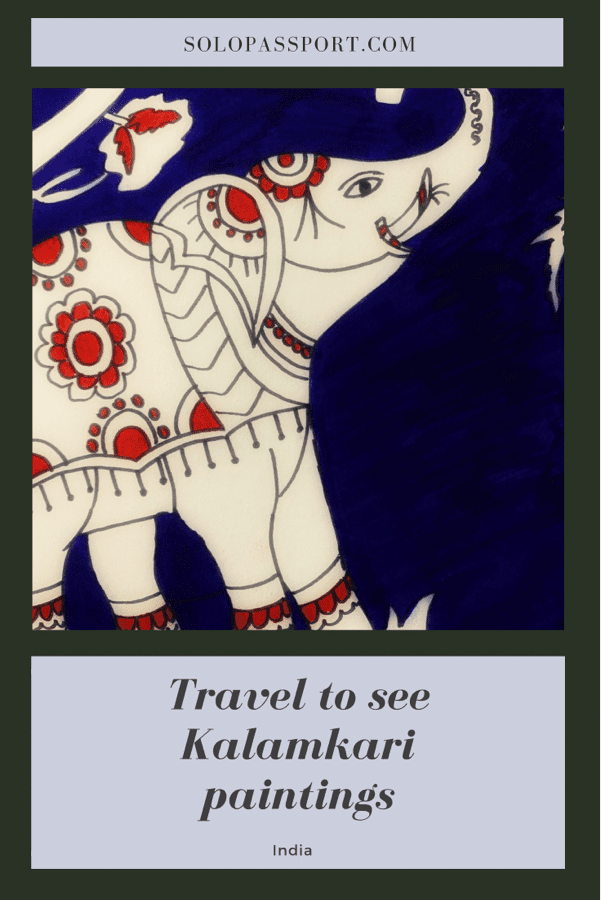Where can you see authentic Kalamkari Paintings in India? (2024)
Discover the vibrant world of Authentic Kalamkari Paintings in India, where traditional artistry meets contemporary expression. From the bustling streets of Machilipatnam to the serene heritage of Srikalahasti, our guide unravels the myriad facets of Kalamkari artistry.
India has many distinctive folk art styles, each with a fascinating history and cultural significance. Among these, the captivating Kalamkari painting style has been passed down through generations, showcasing the enduring artistic traditions of the country.
In my quest to delve deeper into the rich Indian culture, I have dedicated time to practising the intricate artistry of Kalamkari. The lockdown allowed me to explore various forms of Indian paintings, understand their origins, and discover the diverse regions across India where these unique artworks can be acquired. This artistic journey has honed my skills and deepened my appreciation for the varied and vibrant artistic heritage India proudly possesses.
Page Contents
PIN for later reference – Where to See Authentic Kalamkari Paintings in India?
This article may contain affiliate links, meaning if you decide to purchase via my links, I may earn a commission at no additional cost to you. For complete information, please see our affiliate disclaimer here.
What is Kalamkari Painting?
The term “Kalamkari” finds its roots in the Persian language, where ‘Kalam’ translates to ‘pen,’ and ‘Kari’ signifies ‘work’ or ‘craftsmanship.’ Renowned for its exquisite colour patterns, Kalamkari art captures the essence of beauty in its paintings.

Typically featuring depictions of animals, birds, women adorned in yellow, and Gods painted in various shades of blue, Kalamkari paintings come to life on cotton fabrics through a meticulous and entirely handcrafted process. The exclusive use of natural dyes derived from plants and other elements sets this art form apart, encompassing a detailed creation process involving twenty-three intricate steps.
History of Kalamkari Painting
The Kalamkari craft originated in both Iran and India. Chitrakars, a community of musicians and painters, travelled from village to village narrating tales from Hindu mythology, such as the Ramayana and Mahabharata. They illustrated these stories and episodes on expansive cloths to vividly depict them.
Legend has it that the Mughals, appreciating and supporting this unique art form, referred to the Chitrakars as Qualamkars. This association led to the term “Kalamkari,” reflecting the fusion of Persian and Indian influences in this captivating craft.
Where Can You Find Kalamkari Paintings in India?
Originating in Andhra Pradesh, Kalamkari paintings thrive in various parts of the state. For authentic Kalamkari works, one can explore the vibrant art scenes in Srikalahasti, located in the Chittoor district, and Machilipatnam.
Srikalahasti
Srikalahasti, situated in the Chittoor district of Andhra Pradesh, holds religious and historical significance. Legend has it that the town’s name is derived from three animals: Sri (meaning spider), Kala (meaning snake), and Hasti (meaning elephant). According to belief, all three creatures worshipped the Lord Shiva (linga) at the temple and attained moksha.
Nestled along the River Swarnamukhi, Srikalahasti is renowned for the Srikalahasti temple dedicated to Lord Shiva (linga). Constructed in 1516 by the King of the Vijayanagara Empire, Krishnadevaraya, this temple holds utmost importance among devotees. Srikalahasti is also recognized by the names Dakshina Kailasam and Dakshina Kashi.
How to Get to Srikalahasti?
There are four accessible routes from Bangalore city to reach Srikalahasti:
- By Air: Take a flight to Tirupathi, then proceed by taxi or bus to Srikalahasti. The distance between Tirupati and Srikalahasti is a mere 36 kilometres.
- By Public Transport: Opt for buses running from Bangalore to Srikalahasti and vice versa. The bus journey typically spans around 5 hours and 30 minutes, with tickets available on the Redbus website. Additionally, Srikalahasti has its train station, and you can check the train routes and timings on the IRCTC website.
- By Outstation Cab: Choose the convenience of an outstation cab from Bangalore to Srikalahasti. This was my preferred mode of travel when accompanied by my mother. I booked the round trip through Goibibo, incurring a cost of INR 6500.
- By Road: For those who enjoy the independence of the road, you can drive yourself from Bangalore to Srikalahasti. The distance is approximately 285 kilometres, and the journey takes around 5 hours.
Machalipatnam
Previously identified as Masulipatnam, Machilipatnam is a city situated in the Krishna district on the eastern coast of Andhra Pradesh. The name “Machilipatnam” can be deciphered as “Machali,” signifying fish, and “Patnam,” meaning city. For those seeking Machilipatnam Kalamkari paintings, they are readily available in the neighbouring town of Pedana.
How to Get to Machalipatnam?
There are four ways to reach Machilipatnam from Bangalore:
- By Air: The nearest airport is Vijayawada, approximately 54 kilometres from Machilipatnam. Flights between Bangalore and Vijayawada are available for convenient air travel.
- By Train: Machilipatnam has two railway stations, Machilipatnam and Chilakalapudi. The train journey takes around 16 hours and 45 minutes. You can find up-to-date train routes and timings on the IRCTC website.
- By Bus: Opting for the most economical option, you can take a bus, and tickets are easily purchasable on the Redbus website.
- By Road: For those who prefer a road trip, the distance between Bangalore and Machilipatnam is approximately 724 kilometres, taking around 12 hours and 30 minutes. Keep in mind that this is the longest route to reach Machilipatnam.
Closing Notes
My admiration for Kalamkari paintings and their intricate patterns knows no bounds. The vibrant and captivating depictions of mythological stories add a unique charm. Reflecting on my visit to Srikalahasti, I regret not acquiring a saree or two adorned with Kalamkari artistry.
Considering the immense hard work and historical significance woven into each piece, this artistic expression is truly a treasure for any art lover. Collecting and cherishing Kalamkari’s work is a delightful homage to the craftsmanship and rich heritage behind this captivating art form.
If you love Kalamkari’s paintings, you will love Nathdwara’s Pichwai and Raja Ravi Varma’s paintings.
How can you support me?
You know how much I love coffee, so you can buy me a coffee – Buy me Coffee!
Or you can purchase from one of the below travel resources without any extra charge to you:
Travel Resources
Book your flight on Skyscanner.com or Trip.com
Reserve your accommodation on Stay22
Reserve your stay at a hostel on HostelWorld
Use RentalCars or DiscoverCars for hiring self-driven cars
Book your tours and travels or purchase tickets on Viator or GetYourGuide
For a universal SIM card, use DrimSim
Buy comprehensive travel insurance on SafetyWing and WorldNomads
If you liked this article and if it was helpful in your planning or traveling, do share, tweet, or pin this post.
Follow me on Instagram | Facebook | YouTube | Twitter | LinkedIn
Do you have a question? Do you want any suggestions and tips for travel, hikes, and scuba dives? Use the Subscription box below to sign up and get updates by email.




